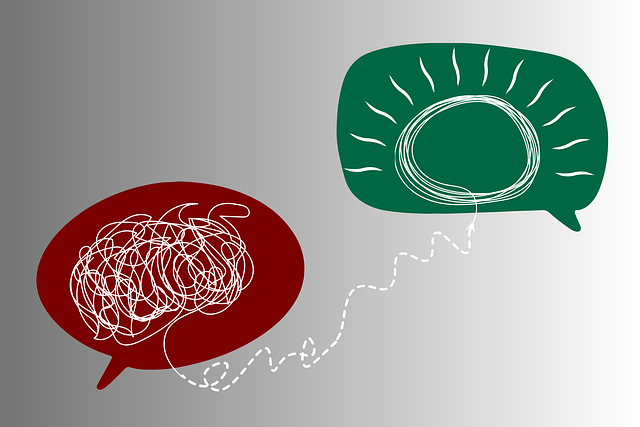Healthcare provider burnout, driven by workload and stress, can be mitigated through Superior Interpersonal Issues Therapy (SIIT), which enhances communication skills and manages interpersonal challenges. This therapy, combined with compassion cultivation and self-care prioritization, boosts emotional resilience and reduces stress levels. Supportive work environments, including peer support groups and community outreach programs, further prevent burnout. Healthcare professionals should also incorporate self-care practices like meditation for mental wellness maintenance. Open communication in healthcare settings encourages help-seeking and resources access, fostering a culture that supports SIIT and prevents burnout.
Healthcare provider burnout is a growing concern, impacting not just individuals but the broader healthcare system. This article explores comprehensive strategies to prevent burnout among healthcare professionals. We delve into key areas like understanding the root causes of burnout, examining the effectiveness of Superior Interpersonal Issues Therapy (SIIT), and fostering supportive work environments that prioritize self-care and open communication. By implementing these tactics, healthcare organizations can create a more sustainable and resilient workforce.
- Understanding Burnout Among Healthcare Providers
- The Role of Superior Interpersonal Issues Therapy (SIIT) in Prevention
- Creating Supportive Work Environments
- Promoting Self-Care and Mindfulness Practices
- Fostering a Culture of Open Communication
Understanding Burnout Among Healthcare Providers

Burnout among healthcare providers is a significant concern, given the demanding nature of their work. It’s characterized by emotional exhaustion, depersonalization, and reduced personal accomplishment, often stemming from prolonged exposure to stressful situations and high-pressure environments. Healthcare professionals, despite their altruistic motivations, are prone to burnout due to factors like heavy workloads, long working hours, and complex patient interactions.
Addressing burnout requires a multifaceted approach. Therapies such as Superior Interpersonal Issues Therapy (SIIT) play a crucial role in enhancing communication skills and managing interpersonal issues, which are often at the root of professional distress. Compassion cultivation practices and self-awareness exercises have also proven effective in promoting emotional resilience and reducing stress levels. Moreover, encouraging healthcare providers to prioritize self-care routine development for better mental health is essential for preventing burnout and ensuring they can continue to provide optimal patient care.
The Role of Superior Interpersonal Issues Therapy (SIIT) in Prevention

Superior Interpersonal Issues Therapy (SIIT) plays a crucial role in preventing healthcare provider burnout by addressing key interpersonal and emotional challenges. This form of therapy equips medical professionals with effective communication skills, enabling them to manage conflicts, improve patient interactions, and foster supportive relationships within their teams. By enhancing social connections and providing a safe space for emotional expression, SIIT helps reduce the isolating nature of healthcare work, which is often associated with burnout.
In times of crisis or high-stress situations, SIIT offers valuable guidance on navigating challenging interpersonal dynamics. It boosts confidence in managing difficult conversations and provides tools for anxiety relief, ensuring healthcare providers feel more equipped to handle demanding environments. This therapy also focuses on building resilience, a vital aspect of preventing burnout over the long term. Through regular sessions, healthcare workers can learn to recognize early warning signs of stress and implement coping strategies before reaching critical points.
Creating Supportive Work Environments

Creating supportive work environments is a crucial aspect of preventing healthcare provider burnout. Hospitals and clinics can implement various strategies to foster a positive atmosphere that promotes mental wellness and encourages open communication. One such approach is establishing peer support groups where doctors, nurses, and other medical staff can share their experiences, offer encouragement, and discuss superior interpersonal issues therapy techniques. This creates a sense of community and belonging, reducing feelings of isolation often associated with high-pressure work environments.
Additionally, implementing community outreach programs can enhance job satisfaction by connecting healthcare providers with the communities they serve. These initiatives improve mood management by providing opportunities for professionals to interact with patients beyond clinical settings, fostering a deeper understanding and appreciation for their roles. By prioritizing these strategies, healthcare institutions not only contribute to burnout prevention but also strengthen their relationships with both staff and patients.
Promoting Self-Care and Mindfulness Practices

Healthcare providers, like all individuals, need to prioritize self-care and mindfulness practices to combat burnout. Incorporating techniques such as meditation, deep breathing exercises, and yoga can help reduce stress levels and enhance mental wellness. These practices not only promote relaxation but also improve focus and emotional regulation, which are crucial for navigating the challenges of patient care, especially in demanding work environments.
In addition to these individual strategies, engaging in Superior Interpersonal Issues Therapy (SIIT) can be highly beneficial. SIIT provides a safe space for healthcare professionals to process complex emotions related to their work, build resilience, and strengthen their ability to connect with colleagues and patients. By nurturing both inner strength development and effective communication skills, burnout prevention strategies become more robust and sustainable, ensuring healthcare providers can continue to deliver high-quality care.
Fostering a Culture of Open Communication

In healthcare settings, fostering an environment where open communication thrives is a powerful tool in preventing provider burnout. This culture shift encourages medical professionals to openly discuss their challenges and concerns, leading to better stress management and improved job satisfaction. When providers feel heard and supported by their peers and superiors, they are more likely to seek help for personal struggles, such as those stemming from Superior Interpersonal Issues Therapy (SIIT), which can significantly contribute to burnout.
Promoting open dialogue also facilitates the reduction of mental illness stigma within the workplace. Public awareness campaigns development and mental wellness coaching programs can further enhance this process, ensuring that healthcare providers have access to resources and support for their mental health. By addressing interpersonal issues openly and providing coaching tailored to individual needs, organizations can create a resilient and supportive culture, ultimately preventing burnout among their workforce.
Healthcare provider burnout is a growing concern, but by implementing evidence-based strategies, such as Superior Interpersonal Issues Therapy (SIIT) and fostering open communication, we can create supportive work environments that promote well-being. Integrating self-care practices and cultivating a culture where professionals feel valued and heard is essential for preventing burnout and ensuring sustainable career satisfaction.














